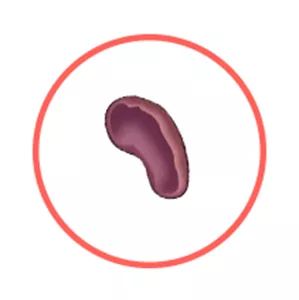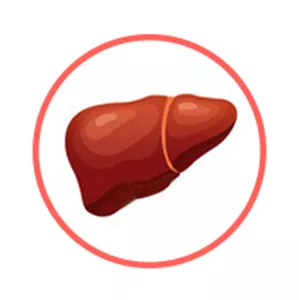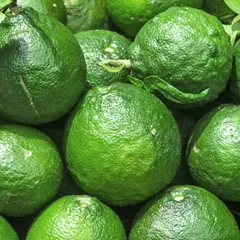Premenstrual syndrome according to Chinese Medicine
The information provided here is not a replacement for a doctor. You shouldn't use it for the purpose of self-diagnosing or self-medicating but rather so you can have a more informed discussion with a professional TCM practitioner.
Premenstrual syndrome factsheet
Possible causes and remedies:
Blood Deficiency with disharmony of Liver and Spleen
Symptoms: Anemia Vertigo Dizziness and ten other symptoms
Recommended formula: Xiao Yao San
Lung Qi Deficiency and Liver Qi Stagnation
Symptoms: Coughing Dizziness Headaches and four other symptoms
Recommended formula: Xiao Chai Hu Tang
In Chinese Medicine, premenstrual syndrome can be associated with two so-called "patterns of disharmony". Chinese Medicine sees the body as a system, not a sum of isolated parts. A "pattern" is when the system's harmony is disrupted. It is not equivalent to the Western concept of "disease", as a matter of fact here premenstrual syndrome can be caused by two different patterns.
To understand whether someone's premenstrual syndrome might be caused by a given pattern, one needs to look for signs and symptoms associated with the pattern beyond what one might typically experience from premenstrual syndrome alone. For instance when premenstrual syndrome is caused by the pattern Blood Deficiency with disharmony of Liver and Spleen, patients also experience symptoms such as chest fullness, chest pain, anemia and dizziness. Similarly, patients with Blood Deficiency with disharmony of Liver and Spleen typically exhibit empty (Xu) or wiry (Xian) pulses as well as a pale tongue.
We've listed below a description of the two patterns associated with premenstrual syndrome so that you can start to get an understanding of the various possibilities according to Chinese Medicine.
Once identified, patterns are often treated using herbal formulas. Drinking herbal infusions is the most common remedy in Chinese Medicine, together with acupuncture. Here we detail below four formulas that can help treat the various patterns associated with premenstrual syndrome, depending on which pattern fits your profile.
The two "patterns of disharmony" associated with premenstrual syndrome

The Spleen is a so-called "Zang" Organ. Learn more about the Spleen in Chinese Medicine
Blood Deficiency with disharmony of Liver and Spleen
Pulse type(s): Empty (Xu), Wiry (Xian)
Tongue color: Pale
Recommended herbal formula: Xiao Yao San
Symptoms: Anemia Vertigo Dizziness Headaches Dry mouth Chest pain Dry throat Leukorrhea Poor appetite Chest fullness Breast distention Irregular menstruation Alternating fever and chills
Premenstrual syndrome might be due to Blood Deficiency with disharmony of Liver and Spleen if the condition is paired with typical pattern symptoms such as chest fullness, chest pain, anemia and dizziness. Similarly, patients with Blood Deficiency with disharmony of Liver and Spleen typically exhibit empty (Xu) or wiry (Xian) pulses as well as a pale tongue.
Read more about Blood Deficiency with disharmony of Liver and Spleen here

The Liver is a so-called "Zang" Organ. Learn more about the Liver in Chinese Medicine
Lung Qi Deficiency and Liver Qi Stagnation
Pulse type(s): Empty (Xu), Tight (Jin)
Tongue coating: Thin white coating
Tongue color: Normal (light red), Pale
Recommended herbal formula: Xiao Chai Hu Tang
Symptoms: Coughing Dizziness Headaches Depression Moving pain Listlessness Hypochondrium fullness
Premenstrual syndrome might be due to Lung Qi Deficiency and Liver Qi Stagnation if the condition is paired with typical pattern symptoms such as coughing, hypochondrium fullness, dizziness and headaches. Similarly, patients with Lung Qi Deficiency and Liver Qi Stagnation typically exhibit empty (Xu) or tight (Jin) pulses as well as a normal (light red), pale tongue with thin white coating.
Read more about Lung Qi Deficiency and Liver Qi Stagnation here
The four herbal formulas that might help with premenstrual syndrome



The top herbs in Xiao Yao San are Bupleurum Roots (Chai Hu), Dong Quai (Dang Gui) and White Peony Roots (Bai Shao)
Xiao Yao San
Source date: 1107 AD
Number of ingredients: 6 herbs
Key actions: Harmonizes the function of Liver and Spleen. Relieves Liver Qi stagnation. Nourishes the Blood.
Why might Xiao Yao San help with premenstrual syndrome?
Because it is a formula often recommended to help treat Blood Deficiency with disharmony of Liver and Spleen, a pattern sometimes associated with premenstrual syndrome. If it looks like you might suffer from Blood Deficiency with disharmony of Liver and Spleen, this formula might help (although please seek confirmation with a professional practitioner beforehand).



The top herbs in Xiao Chai Hu Tang are Bupleurum Roots (Chai Hu), Baikal Skullcap Roots (Huang Qin) and Crow-Dipper Rhizomes (Ban Xia)
Xiao Chai Hu Tang
Source date: 220 AD
Number of ingredients: 7 herbs
Key actions: Treats the Lesser Yang Channels (Gallbladder and Triple Warmer). Regulates the Liver and Spleen functions. Addresses combined Yin-Yang symptoms of External and Internal, Excess and Deficiency, and Hot and Cold.
Why might Xiao Chai Hu Tang help with premenstrual syndrome?
Because it is a formula often recommended to help treat Lung Qi Deficiency and Liver Qi Stagnation, a pattern sometimes associated with premenstrual syndrome. If it looks like you might suffer from Lung Qi Deficiency and Liver Qi Stagnation, this formula might help (although please seek confirmation with a professional practitioner beforehand).



The top herbs in Ping Wei San are Black Atractylodes Rhizomes (Cang Zhu), Houpu Magnolia Bark (Hou Pu) and Tangerine Peel (Chen Pi)
Ping Wei San
Source date: 1051 AD
Number of ingredients: 4 herbs
Key actions: Dries Dampness. Improves the Spleen's transportive function. Promotes the movement of Qi. Harmonizes the Stomach.
Why might Ping Wei San help with premenstrual syndrome?
Because it is a formula often recommended to help treat , a pattern sometimes associated with premenstrual syndrome. If it looks like you might suffer from , this formula might help (although please seek confirmation with a professional practitioner beforehand).



The top herbs in Si Ni San are Bupleurum Roots (Chai Hu), Immature Bitter Oranges (Zhi Shi) and White Peony Roots (Bai Shao)
Si Ni San
Source date: 220 AD
Number of ingredients: 4 herbs
Key actions: Regulates Liver and Spleen. Eliminates Internal Heat.
Why might Si Ni San help with premenstrual syndrome?
Because it is a formula often recommended to help treat , a pattern sometimes associated with premenstrual syndrome. If it looks like you might suffer from , this formula might help (although please seek confirmation with a professional practitioner beforehand).
Symptoms related to premenstrual syndrome
Dizziness Headaches Chest fullness Chest pain Anemia Dry mouth Dry throat Poor appetite Irregular menstruation Leukorrhea




